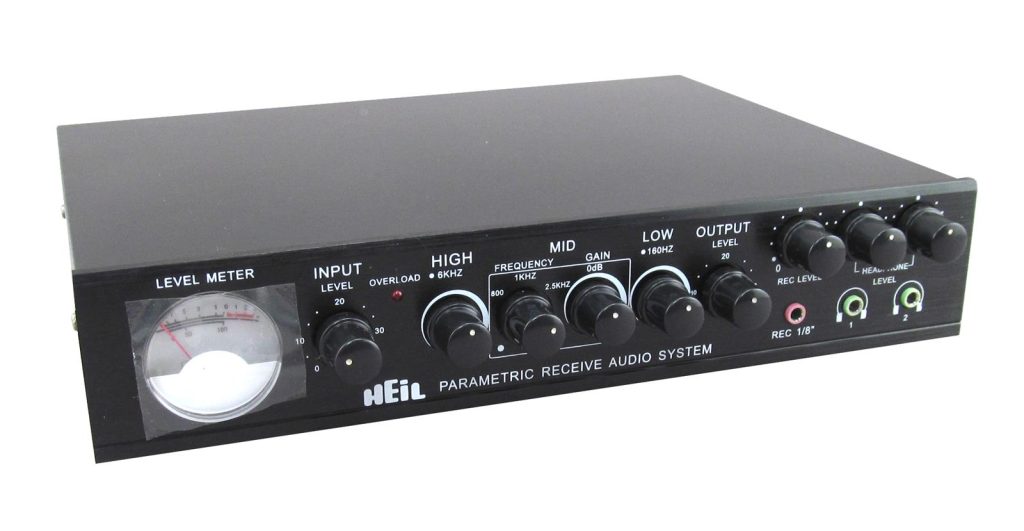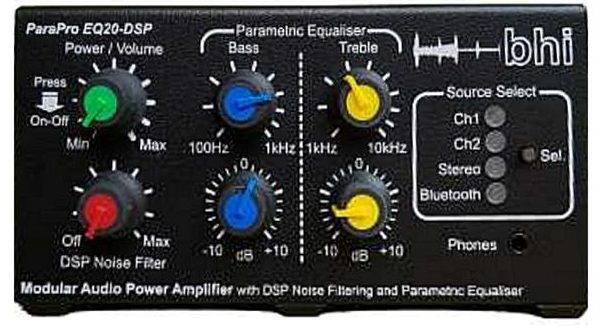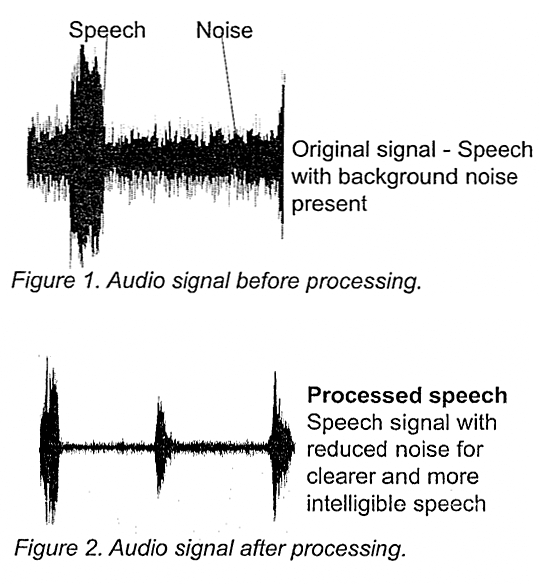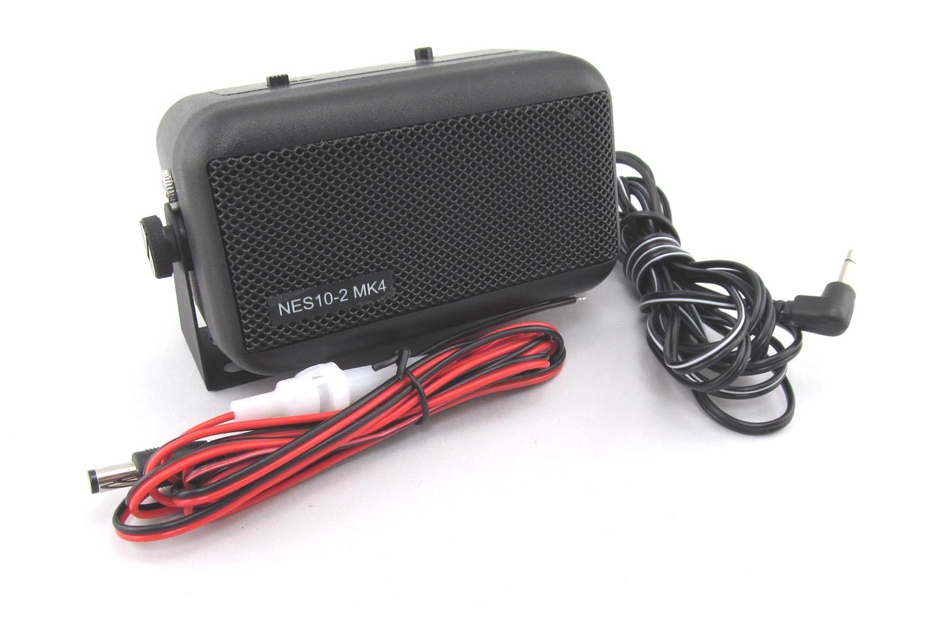Sometimes it’s tough to dig signals out of the noise. You can hear it but can’t make out all the words.
If your radio’s built-in noise reduction isn’t sufficient, consider external options, especially with older transceivers. Many manufacturers offer effective noise reduction units that can be used alongside your transceiver. These external units can provide a significant boost to your receiver’s performance—and your ability to copy signals.
If you’re familiar with audio improvement and noise reduction products, you already understand the vital role they play. If not, here’s how they help. These products essentially operate to ensure that only the central audio can be heard by removing unwanted noise from the background.
Intelligibility Through EQ
We aren’t getting any younger, and our hearing isn’t improving. Add to this some youthful indiscretions in our earlier days, like cranking up the stereo while wearing closed headphones. Or maybe you sat in the front row of a Black Sabbath concert, confused by Ozzy’s lyrics while being blasted with 110 dB of guitar and drums. All of these eventually cause gaps in our hearing ability.
According to hearing and speech experts, when it comes to English, frequencies important for speech intelligibility are the consonant sounds from 500 to 4,000 Hz. They contribute 83% of word intelligibility. Frequencies from 500 to 1,000 Hz contribute 35% of word intelligibility. In other words, most intelligibility is contained in the 1,000 to 4,000 Hz frequency range.
To improve the ability to hear and understand QSOs, you increase the speech energy above 500 Hz, where that 83% of intelligibility is concentrated. Second, drastically reduce the speech energy below 500 Hz that contributes only 4% of intelligibility. Amateur radio communications typically use 300 to 2,700 Hz.
“I know I’m not the only ham who can’t understand all the speech in a QSO caused by high-frequency hearing loss,” explained Martin F. Jue, founder of MFJ Enterprises, Inc. He developed a solution, the MFJ-616, which became one of the first commercially made speech intelligibility enhancers for ham radio. He split the audio band into four overlapping octave ranges centered at 300, 600, 1,200, and 2,400 Hz. You can boost or cut each range by nearly 20 dB, maximizing speech intelligibility for most kinds of frequency loss.
The idea is to boost levels at a selected frequency or range of frequencies to help compensate for hearing limitations or improve the sound of your received audio. It’s not your typical stereo system’s equalizer with a dozen or so ranges. Instead, it concentrates on maximizing the articulation of received voice and CW signals. The Heil Parametric Receive Audio System (PRAS) has three ranges centered on the following frequencies: low at 160 Hz, high at 6 KHz, and mid-adjustable from 800 Hz to 4 KHz. Mid is most important and may improve articulation for both SSB and CW.

Heil’s PRAS seems to work best for older rigs—especially those without equalization—and operators with hearing loss. It puts audio response control at your fingertips, eliminating the need to dig through radio menus. Be sure to add the matching HPS-5 Powered Speaker. It really makes a difference with the ultra-low distortion amplifier and enhanced midrange.

bhi’s ParaPro EQ20 Parametric Equalizer series includes two adjustable equalization ranges, and options include Bluetooth and DSP (Digital Signal Processing). The LDG Electronics AAF5 also has two adjustable ranges, improving signal-to-noise ratio and increasing overall signal readability.

Digital Signal Processing (DSP)
DSP is often found on modern receivers because it has flexible and powerful signal processing capabilities that are difficult or impossible to achieve with purely analog circuitry. In a typical radio receiver block diagram, the DSP section is generally found after the intermediate frequency (IF) stage and before the audio processing stage. It’s responsible for further processing the received signal, including demodulation, filtering, and other manipulations to extract the desired information.

DSP can make weak signals easier to hear and strong signals more pleasant for long-term listening. It’s not a cure-all for all signal-to-noise or audio problems, but it’s a big help. Add-on units can be readily moved from location to location and from radio to radio, adding a new capability to receivers that do not have built-in DSP.
The downside is artifacts—they can have a watery sound quality, like SpongeBob and Patrick chatting at Bikini Bottom. No doubt, it’s the DSP simply doing its thing: minimizing background noise and seeking to clarify voice and audio information. But some devices do it better than others.
The bhi Dual In-Line DSP Noise Eliminating Module provides two-channel or stereo noise cancelation and is suitable for use on all receivers and transceivers, including SDR. It may also be used with monaural speaker input and output signals, providing up to 7 watts of audio when a mono speaker is connected. The unit’s multiple output options allow simultaneous use of headphones, passive speakers, and powered speakers.
The module is easy to operate. There are two knobs—press the left one in to power up the unit, then turn the knob to adjust the volume. Press the right knob to activate noise reduction, then turn the knob to adjust the level of noise reduction. The sweet spot for listening is with the noise reduced but not completely gone. bhi recommends about six on the scale. Press the right knob again to bypass noise reduction and hear what the signal sounds like without the bhi module online.
When compared to the Yaesu FTDX10‘s highly regarded DSP, the bhi Dual In-Line DSP holds its own for noise reduction capabilities. A comparison between the Yaesu FTDX10’s built-in DSP features and the bhi used alone with the radio’s DSP features disabled yielded nearly the same results, in my subjective opinion. Adding it to the FT-710, the bhi DSP alone showed a noticeable improvement over the internal DSP.
According to bhi, the DSP noise reduction operates by identifying whether or not speech is present in the signal. The filter level adjusts the amount of noise that passes through with the speech components. As good as the bhi products are, they have some limitations. Sometimes they will not eliminate all the noise, though the noise will be substantially reduced. If you crank up the level of filtering/noise cancelation too high, it can distort speech and make tuning single sideband difficult. Also, you will sometimes hear artifacts of the DSP.

Clearly a Winner
One surprise I didn’t expect was the bhi NES10-2MK4 DSP Noise Eliminating Filter (below).

For a small add-on speaker, it did an impressive job, probably because it uses the same technology as the bhi dual in-line unit. The compact speaker measures 4.33″ x 2.56″ x 2.17″ and is particularly effective for improving the voice quality in amateur radio and shortwave listening. The speaker can be used in a base station environment, portable, or mobile—flexibility is a big plus.
The rear panel output level control sets the audio output to suit your setup. The three-position switch on the top of the speaker controls the main functions: Off (audio bypass), On (amplified audio), and DSP (noise canceling on). The speaker has a quality 5W audio amplifier with DSP noise canceling from 8 to 40 dB over eight user-selectable levels, and tone reduction up to 65 dB.
As with most adjustable DSP systems, I found that settings in the middle offered the best compromise between signal quality and noise elimination. There was still quite a bit of noise present at the lower settings. At the higher levels, there are more digital artifacts and distortion. The artifacts were most noticeable with no signals present or during pauses in the station’s transmissions. When a signal was present, the artifacts were much weaker, proportional to the strength of the signal.
Making the Most of DSP
DSP can significantly enhance the clarity and intelligibility of received signals by reducing noise and interference. Digital technology works by identifying unwanted spikes in audio that obstruct or distract from the intended content. Then it isolates these spikes and removes them entirely, meaning your broadcasts contain only what you want them to, rather than confusing background noises.
To get the most from DSP, first lower your background noise level. This can be accomplished by adding some attenuation and leaving the preamp setting at Intercept Point Optimization (IPO)—a setting on your receiver that allows you to bypass or reduce the gain of the receiver’s initial RF amplifier. Also, turn down the RF gain. It can improve signal clarity by lowering the noise floor and preventing signal overload.
Cut the Noise
Any amateur radio operator would benefit from audio clarity and noise reduction technology. However, if you find yourself frequently frustrated with the quality of the audio on your transceiver, noise eliminators and filters are a must. They can make a significant difference to your audio quality.
With the right noise reduction and audio enhancement products, you can receive radio audio clearer than ever before. Depending on the model and technology you choose, you can adjust how much is removed from the original audio. If you have hearing loss, you can adjust parts of the sound spectrum to help you better understand radio transmissions with the aid of an audio equalizer.
Modern DSP in ham radio involves converting analog signals to digital, manipulating them with algorithms, and then converting them back to analog for reception. This allows for enhanced signal processing, including filtering, noise reduction, and error correction, leading to clearer and more reliable communication.

